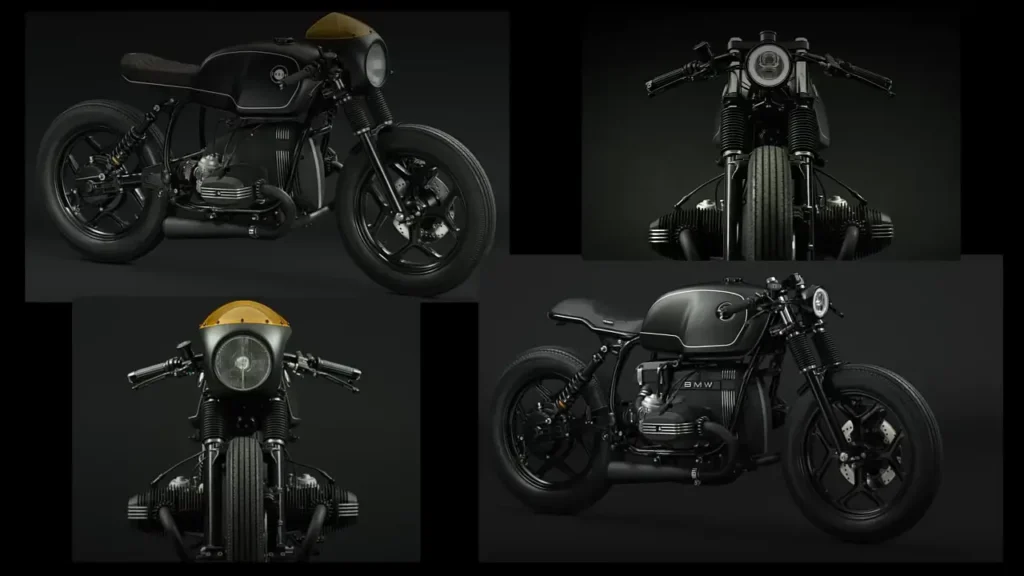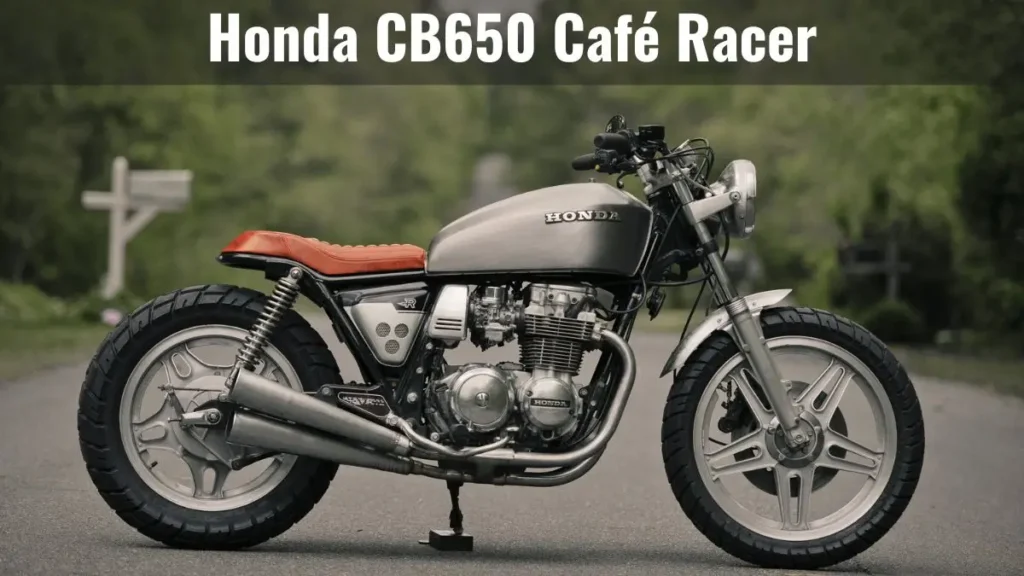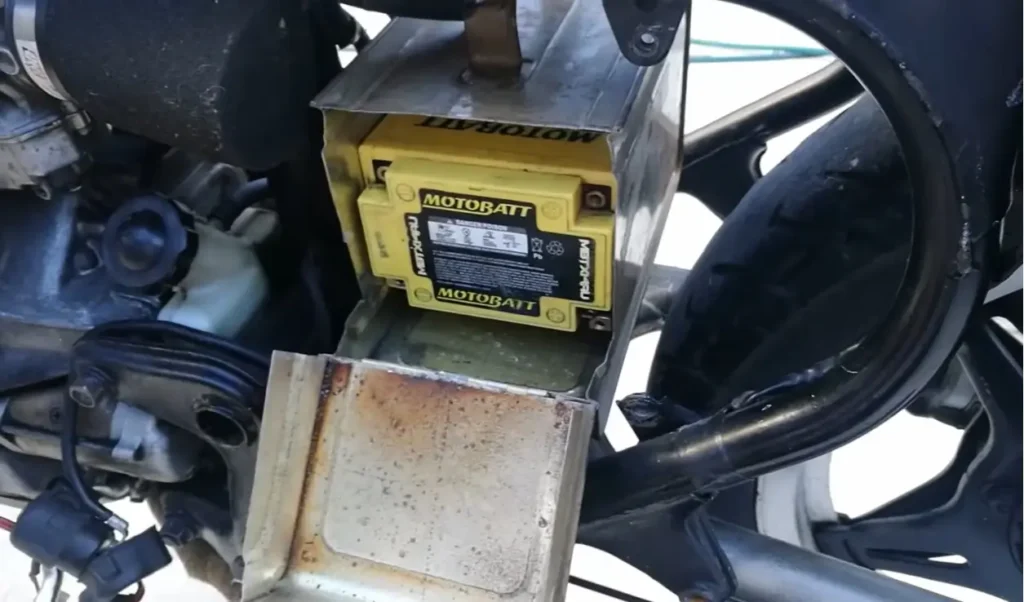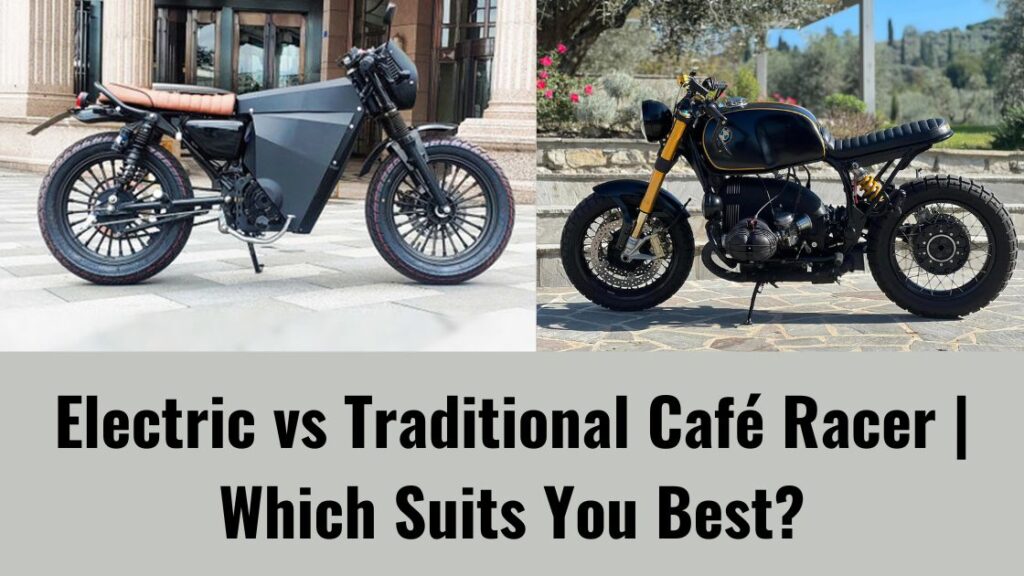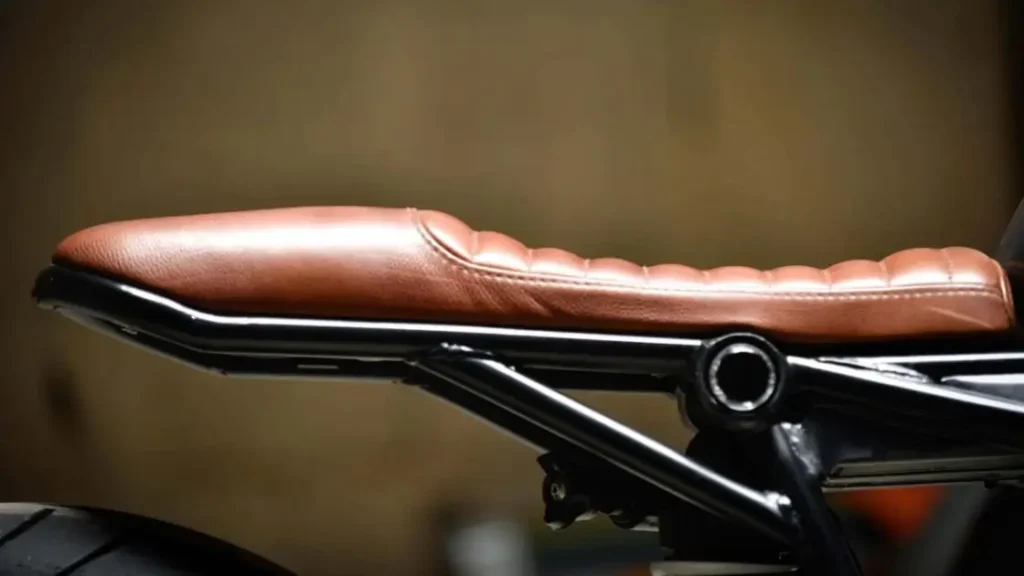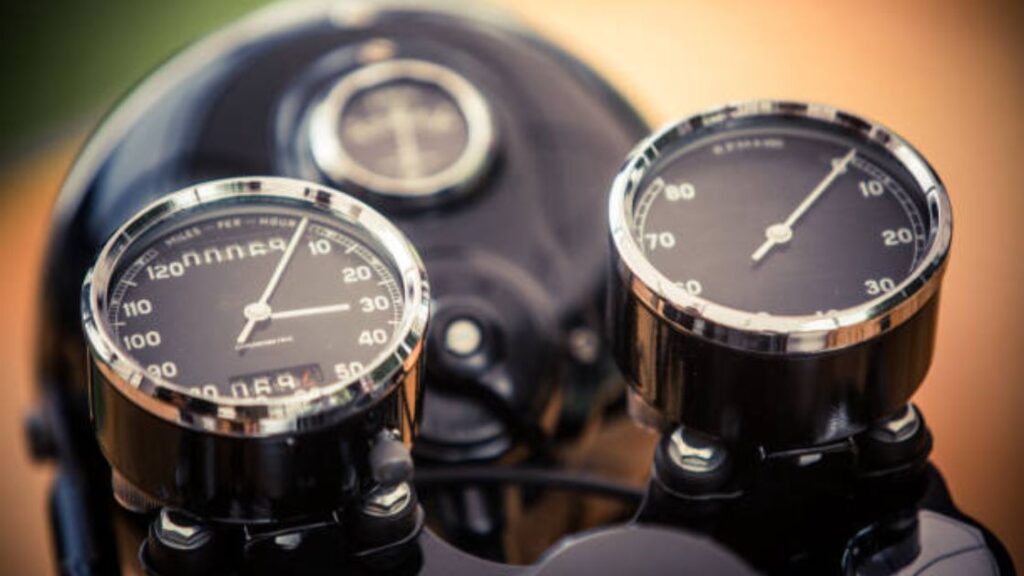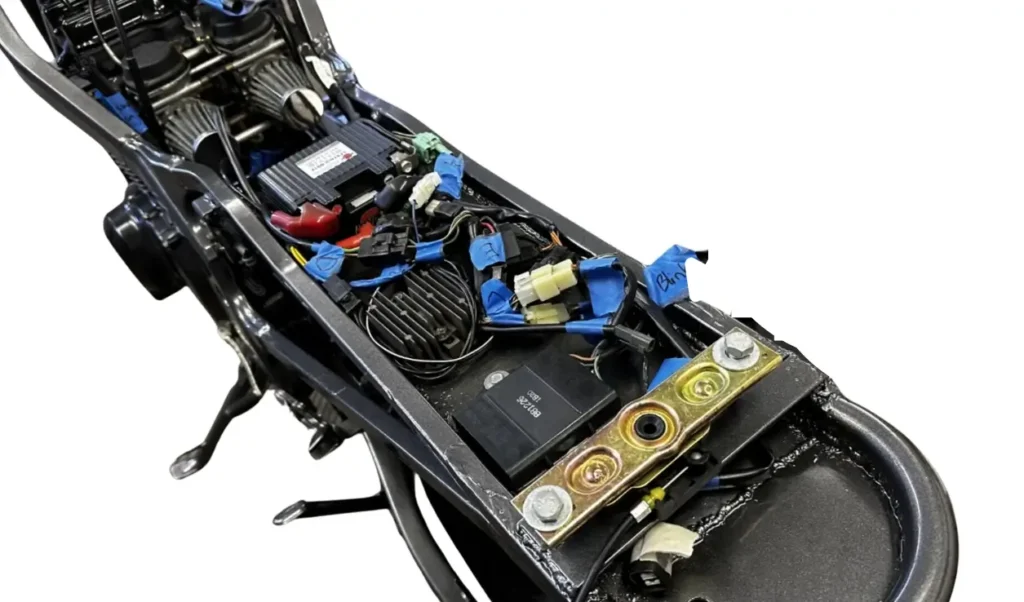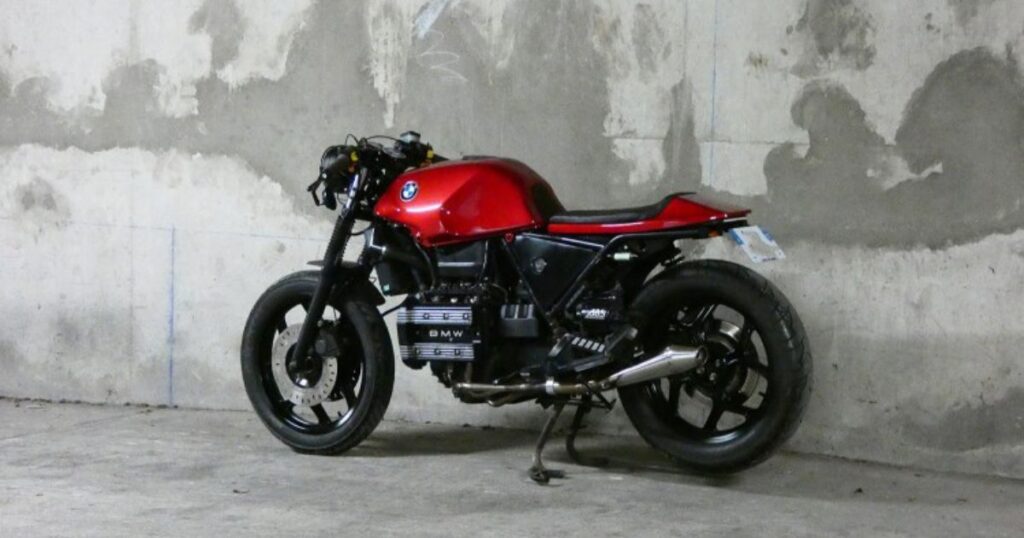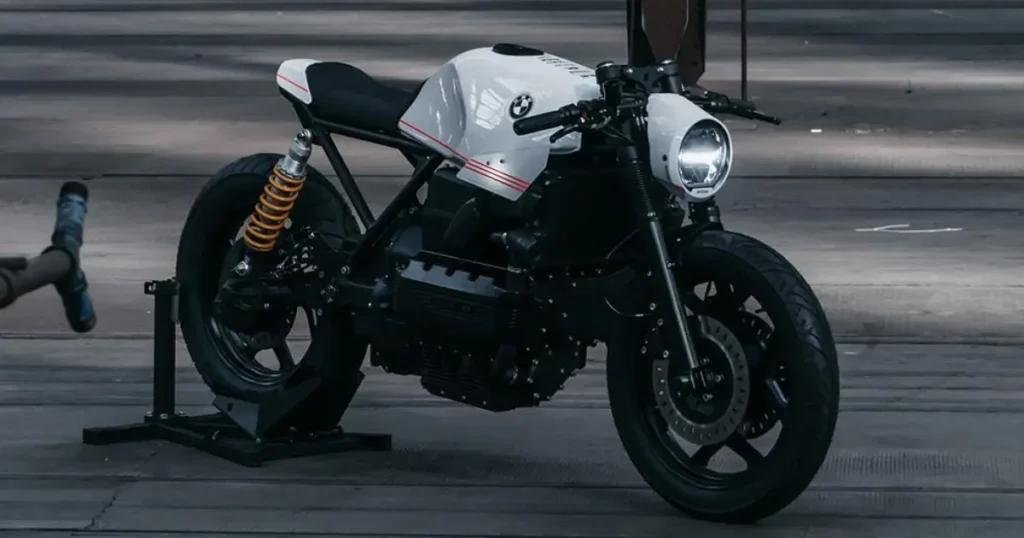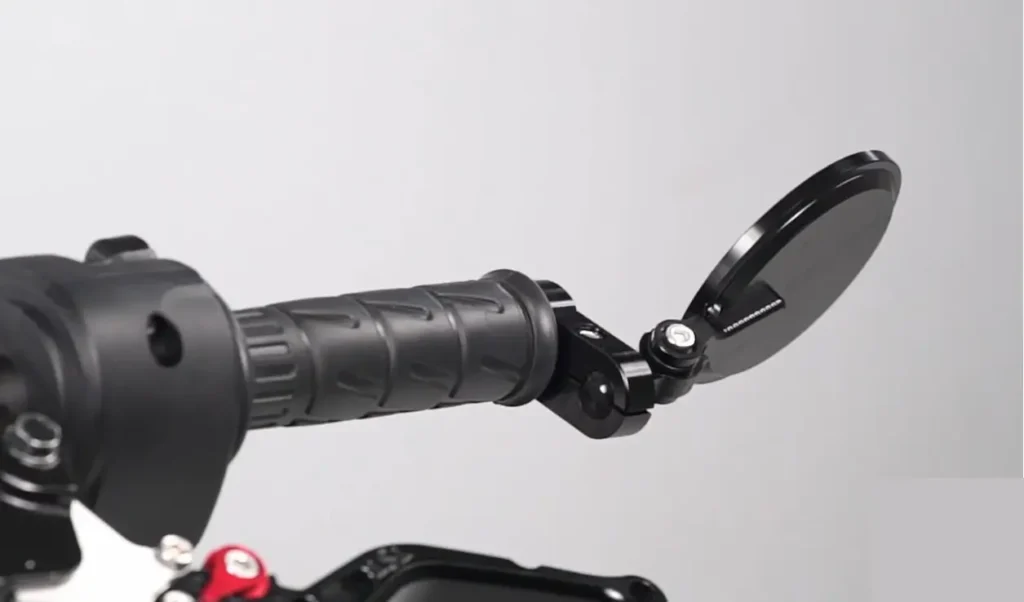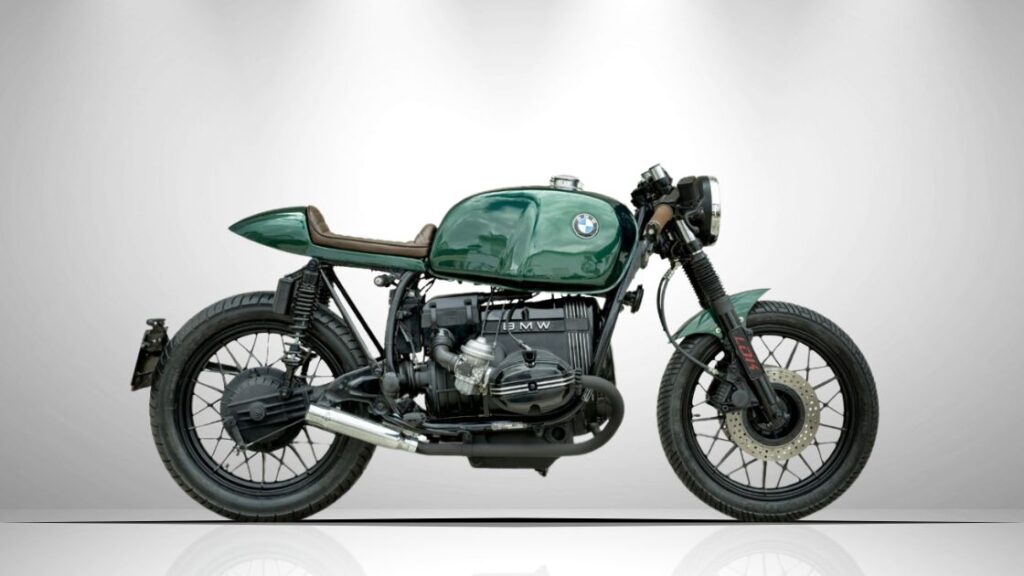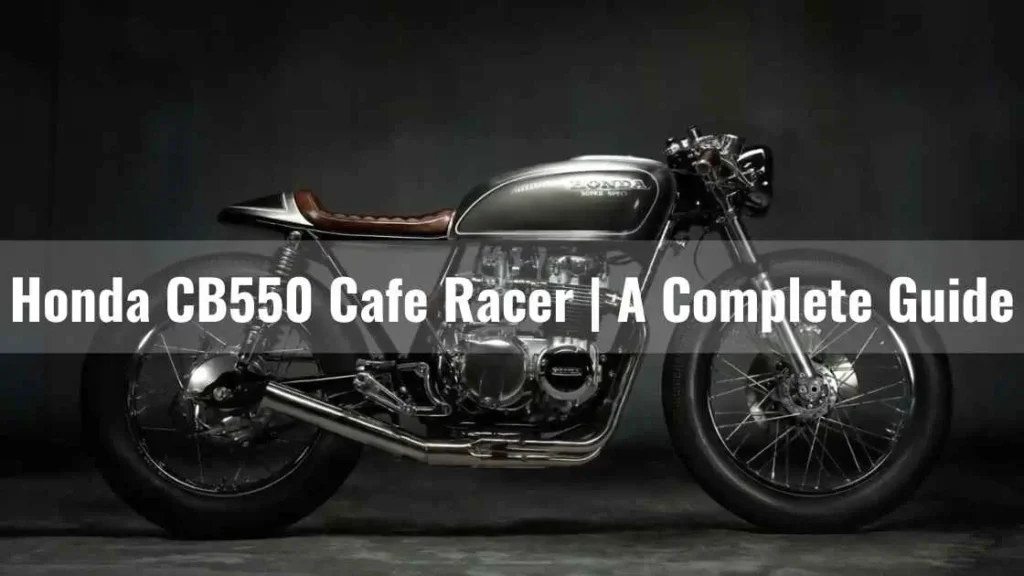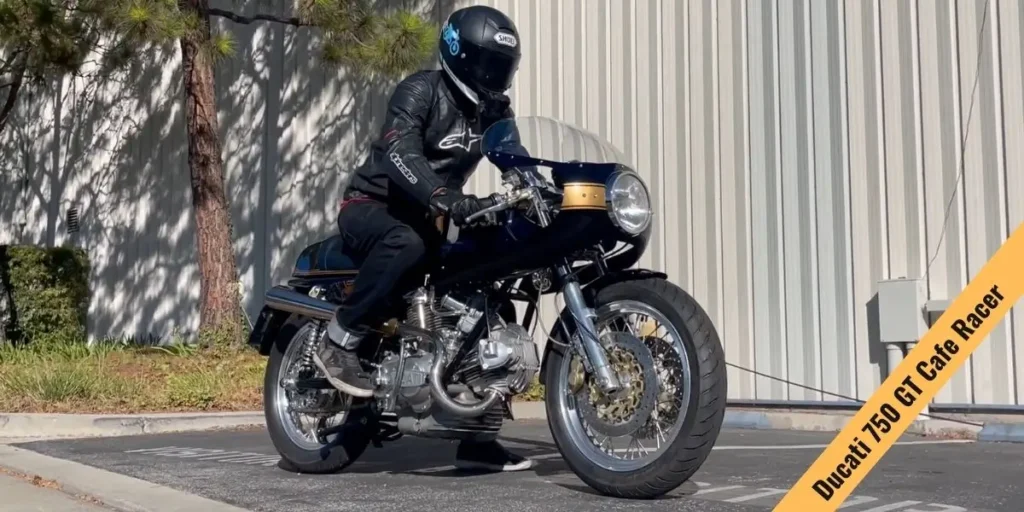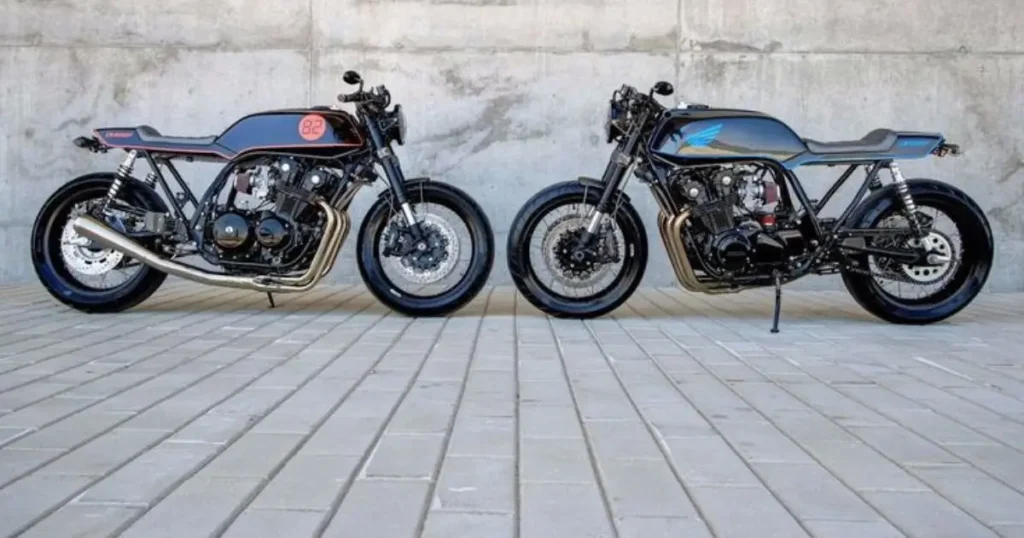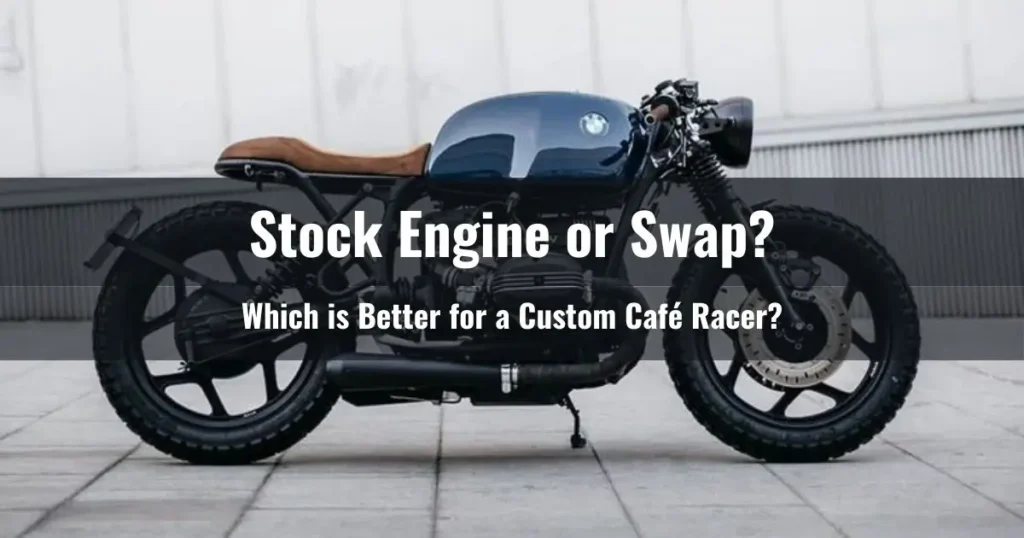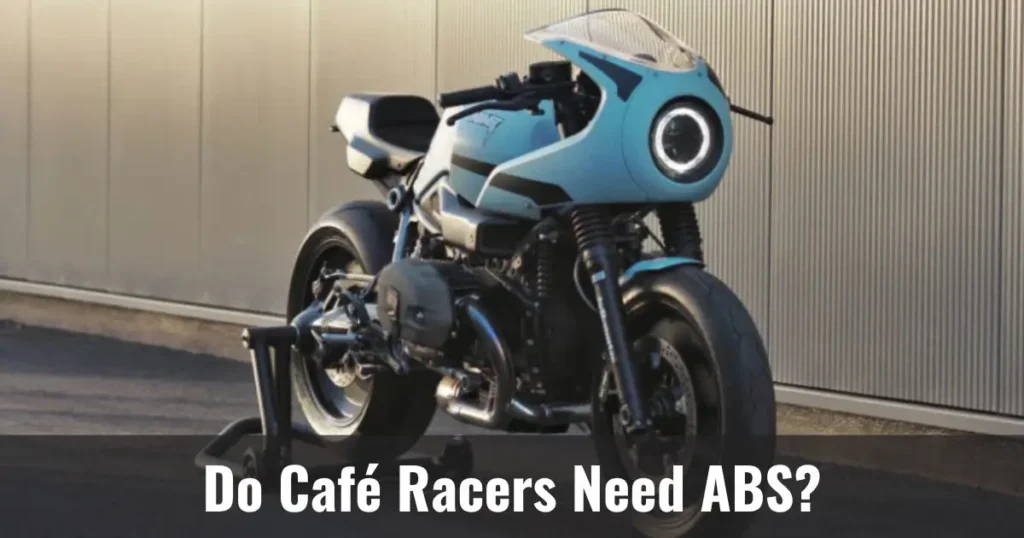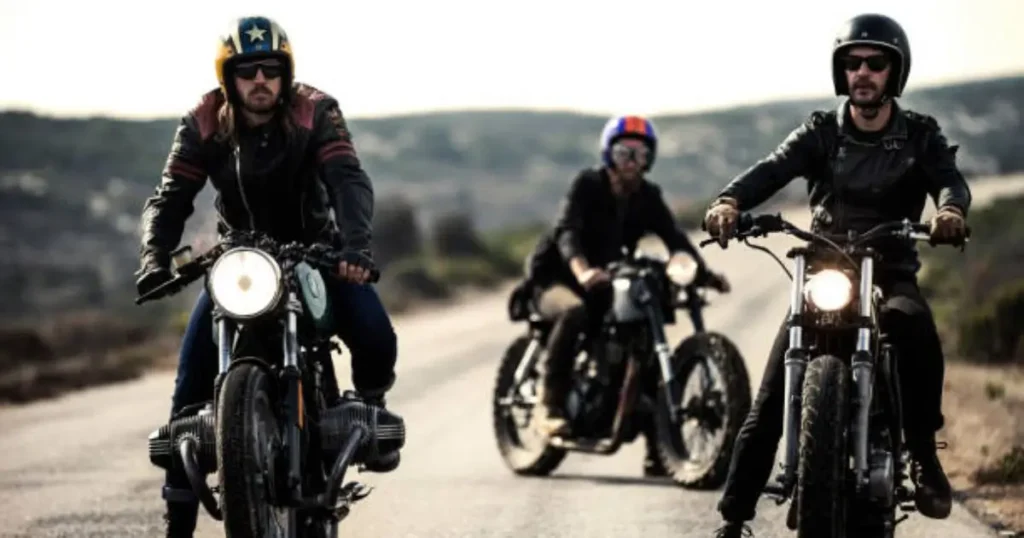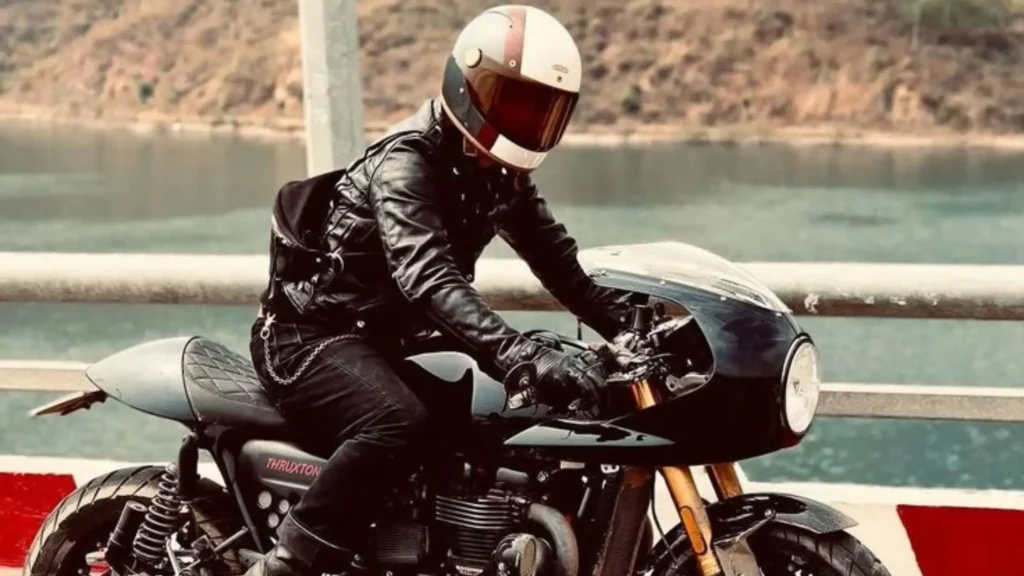Table of Contents
ToggleThe BMW R75 Cafe Racer is more than a motorcycle. It’s a piece of history transformed into a work of art. This bike combines vintage charm with modern customization. It’s a favorite for riders who want both style and performance.
The original BMW R75 came from a very different world. It was a military bike built during World War II. Later, enthusiasts saw its potential for customization. They turned it into a symbol of creativity and individuality.
People love this bike for its strong frame and reliable engine. It’s perfect for building a cafe racer. Riders say it has the ideal balance of power, durability, and classic looks.
In this article, I’ll show you everything about the BMW R75 Cafe Racer. From its history to how to build one. Whether you’re just curious or planning your own project, you’ll find all the details you need.
The History of the BMW R75
The BMW R75 has a rich and important history. It was first made in the 1940s for military use during World War II. Soldiers used the bike with a sidecar, which made it practical for rough terrains like mud, sand, and snow. Its strong design and durability made it reliable in difficult conditions.

After the war, production stopped for a while. Years later, motorcycle enthusiasts discovered the BMW R75 again. They admired its strong engine and solid frame. These features made it ideal for customization. Builders started turning the bike into something special, giving it a new life as a cafe racer.
Over time, its reputation grew. Riders loved its vintage look and smooth performance. The bike became a symbol of style and creativity. Today, the BMW R75 is a favorite for custom projects. Its connection to history adds to its charm.
Different Versions of the BMW R75
The BMW R75 has several versions. Each version has its own features and benefits. Understanding these differences helps builders choose the right one for their cafe racer project.
BMW R75/5

The R75/5 was introduced in the early 1970s. It was part of the “slash 5” series. Key features include:
- Engine: A 745 cc boxer engine with 50 horsepower.
- Frame: Lighter and stronger than older models.
- Electric Starter: Made starting the bike easier.
- Why It’s Popular: Builders like its simple design and reliability.
BMW R75/6

The R75/6 came out in the mid-1970s as part of the “slash 6” series. It included several upgrades:
- Disc Brakes: Better stopping power with front disc brakes.
- 5-Speed Transmission: Improved gear control compared to the earlier 4-speed system.
- Engine: Still a 745 cc engine but with smoother performance.
- Durability: Built to last, making it a great choice for restoration.
BMW R75/7

The R75/7 was released in the late 1970s. It brought added comfort and better performance:
- Engine Refinements: Improved fuel efficiency and smoother operation.
- Suspension: Enhanced for a more comfortable ride.
- Styling: Slightly modernized with a refined tank and seat.
- Why Builders Like It: Combines classic style with added comfort.
Which Version to Choose?
- The R75/5 is perfect for a simple, lightweight base.
- The R75/6 is ideal for better brakes and city riding.
- The R75/7 offers comfort and modern touches.
Each version has its strengths. Your choice depends on what you value most in your project.
BMW R75 Specifications
The BMW R75 has solid features that make it special. Here are its key specifications:
Engine
- Type: Boxer, twin-cylinder, four-stroke
- Displacement: 745 cc
- Power Output: 26 horsepower (original military version)
- Torque: 41 Nm
- Cooling System: Air-cooled
- Transmission: 4-speed manual with reverse gear
Dimensions
- Length: 2,180 mm
- Width: 800 mm (without the sidecar)
- Height: 1,000 mm
- Wheelbase: 1,450 mm
- Weight: 420 kg (with sidecar)
Performance
- Top Speed: 95 km/h
- Fuel Tank Capacity: 24 liters
- Fuel Consumption: 7-8 liters per 100 km
Suspension and Brakes
- Front Suspension: Telescopic fork
- Rear Suspension: Rigid frame
- Brakes: Drum brakes on both front and rear
Unique Features
- Reverse Gear: Useful for bikes with sidecars.
- Sidecar Design: Made for rugged terrain.
- Durability: Built to last in extreme conditions.
These specifications make the BMW R75 a strong and reliable bike. Its features provide a solid foundation for cafe racer builds.
What Makes the BMW R75 Ideal for Cafe Racer Builds?

The BMW R75 is a popular choice for cafe racer projects. Its design and performance make it perfect for custom builders. Many riders call it a “builder’s bike” because of how well it adapts to changes.
The engine is one of its best features. It uses a boxer-style engine with two cylinders. This design is simple and easy to work on. It also delivers smooth power, which riders love. The bike’s original engine can handle upgrades, making it more powerful without losing reliability.
The frame is strong and well-built. Builders can easily modify it to fit the sleek style of a cafe racer. Many cafe racers have a low, streamlined look. The BMW R75’s frame works perfectly for this kind of design. It allows builders to add custom seats, tanks, and handlebars.
Durability is another reason why people choose this bike. The BMW R75 was originally made for rough conditions. Its parts were built to last, even in tough situations. This quality makes it a good investment for people who want a long-lasting cafe racer.
The vintage appeal of the BMW R75 also stands out. Many riders like its classic style. Turning this bike into a cafe racer keeps the retro look alive while adding a modern touch. It’s a mix of old and new that appeals to many enthusiasts.
Key Features of a BMW R75 Cafe Racer

The BMW R75 Cafe Racer stands out with its unique features. Builders keep the best parts of the original bike and add custom touches to improve performance and style.
Engine and Performance
The boxer engine is the heart of the BMW R75. It has two cylinders placed opposite each other. This design gives the bike balance and smooth power delivery. Many builders upgrade the engine for more speed and better performance. Some install modern carburetors to improve fuel efficiency and throttle response. Others add custom exhaust systems to give the bike a louder, more aggressive sound.
Frame Modifications
The frame is strong and easy to customize. Builders often remove unnecessary parts to make the bike lighter. A lighter frame improves speed and handling. Many also lower the rear end of the bike to achieve the classic cafe racer look. The sleek, minimal design of a cafe racer pairs well with the sturdy frame of the BMW R75.
Seat and Tank Design
The seat and fuel tank are key to a cafe racer’s appearance. Builders replace the original seat with a shorter one, often with a hump at the back. This shape gives the bike a sporty look. The fuel tank is usually reshaped or replaced with a custom one. A slim, elongated tank enhances the bike’s streamlined profile.
Handlebars and Controls
Clip-on handlebars are a common upgrade. They sit lower than traditional bars, giving the rider a forward-leaning position. This position is ideal for speed and control. Custom grips, levers, and foot pegs also improve comfort and add a personal touch to the bike.
Lights and Accessories
Modern LED lights are a popular choice for cafe racers. Builders add LED headlights and tail lights to give the bike a sleek, updated look. Many also use smaller indicators to keep the design clean. These simple changes enhance safety without taking away from the bike’s vintage charm.
The BMW R75 Cafe Racer is a perfect blend of classic and modern. Each feature plays a role in its unique appeal. Builders can customize it to match their vision while keeping the essence of the original bike.
Step-by-Step Guide to Building a BMW R75 Cafe Racer
Building a BMW R75 Cafe Racer requires planning and effort. The process is straightforward if you break it into smaller steps. Each part of the bike is important and deserves attention. Below is a simple guide to help you start.
Step 1: Inspect the Base Bike
Start by checking the condition of the BMW R75. Look at the engine, frame, wheels, and suspension. Make sure the bike is complete. Old parts might need repair or replacement. A strong base saves time and money later.
Step 2: Remove Unnecessary Parts
Strip the bike to its essentials. Take off parts you don’t need, like the original seat, fenders, and side covers. This reduces weight and prepares the bike for a clean, custom look. Keep the parts you might reuse.
Step 3: Modify the Frame
Shorten the rear frame to match the style of a cafe racer. Many builders add a loop at the back for support. Make sure the frame is strong and aligned. A clean frame gives the bike its basic shape.
Step 4: Upgrade the Engine
Inspect the engine for wear and tear. Replace old seals, gaskets, and other worn parts. Upgrade the carburetors for better fuel delivery. Add a custom exhaust for improved sound and performance. A well-tuned engine makes the bike fast and reliable.
Step 5: Install Custom Components
Add a cafe racer seat, slim fuel tank, and clip-on handlebars. These parts change the bike’s look and feel. Use lightweight materials for better handling. Match the colors and finishes for a clean, stylish design.
Step 6: Add Modern Lighting
Install LED headlights, tail lights, and turn signals. These lights are bright, efficient, and long-lasting. Smaller lights also give the bike a neat appearance. Place them in positions that highlight the bike’s lines.
Step 7: Check the Suspension and Brakes
Upgrade the suspension for better ride quality. Adjust the front forks or replace them if needed. Modern brakes improve safety and control. Disk brakes are a common upgrade for older bikes.
Step 8: Finish with Paint and Details
Choose a paint scheme that fits your style. Many cafe racers have simple, bold colors like black, silver, or red. Add decals or logos to personalize the bike. Small details, like polished metal or leather grips, make a big difference.
Step 9: Test the Bike
Once the build is complete, test the bike. Check the engine, brakes, and lights. Ride it to see how it feels. Adjust anything that needs improvement. A well-tested bike is safer and more enjoyable.
Building a BMW R75 Cafe Racer takes time and effort. Each step is a chance to add your personal touch. The result is a bike that’s unique and full of character.
Legal Requirements for Modifying a BMW R75

Customizing a BMW R75 into a cafe racer is exciting, but there are rules to follow. These rules keep the bike safe and legal for the road. Knowing them helps you avoid problems later.
Road Safety Standards
Every motorcycle on the road must meet safety standards. This includes working brakes, lights, and mirrors. Make sure the headlights, turn signals, and tail lights are visible and bright. The horn must also work properly. These parts ensure safety for you and others.
Emission Rules
Older bikes like the BMW R75 were made before strict emission laws existed. In some areas, modified bikes must pass emission tests. Upgrading the engine or exhaust might affect emissions. Check local rules to see what is allowed. Use approved parts to meet requirements.
Frame and VIN
The frame of the bike has a Vehicle Identification Number (VIN). This number connects the bike to its registration. Do not remove or cover the VIN during customization. If you replace the frame, notify the proper authorities. This keeps the bike legal and easy to identify.
Registration and Insurance
After the customization, update the bike’s registration. Some countries require inspection before registering a modified bike. Show all documents, including receipts for new parts. Update your insurance policy to cover the custom bike. This protects you in case of accidents or theft.
Noise Limits
Custom exhaust systems often make the bike louder. Many areas have laws about noise levels. Check the maximum noise limit in your region. Use an exhaust system that stays within the allowed range.
Rider Safety Gear
Some regions require riders to wear specific gear, such as helmets or gloves. While this is not part of the bike, it’s important for legal and personal safety. Always wear approved safety gear when riding.
Following these rules ensures your BMW R75 cafe racer is safe and roadworthy. It also saves you from fines or legal issues. Always check local laws before starting a customization project.
Top Trends in BMW R75 Cafe Racer Customization

BMW R75 cafe racers are more than just bikes. They are a mix of style and function. Trends in customization show how builders add modern ideas to classic designs. These trends keep the bike fresh and exciting.
Minimalist Design
Simple designs are very popular. Builders remove extra parts to make the bike lighter and cleaner. A stripped-down look focuses on the essentials. This style gives the bike a timeless, sleek appearance.
Modern Technology
Adding modern features is a common trend. Digital speedometers, LED lights, and keyless ignitions are popular upgrades. These changes improve usability while keeping the vintage charm of the bike.
Unique Paint Jobs
Many builders use bold colors or custom graphics to stand out. Matte finishes and metallic shades are common. Some riders prefer classic black or white with small details to highlight the bike’s vintage look.
Eco-Friendly Modifications
Some builders focus on making the bike more eco-friendly. Electric conversions are gaining interest. They replace the original engine with an electric motor. This reduces emissions while keeping the bike stylish and fast.
Custom Seats and Tanks
Cafe racers often have unique seats and tanks. Builders use handcrafted leather seats for a premium look. Custom fuel tanks with sharp lines or vintage curves give the bike personality. These parts are both functional and stylish.
Street-Ready Designs
Many cafe racers are built for show, but street-ready bikes are in demand. Builders focus on comfort and reliability for daily rides. This trend mixes cafe racer aesthetics with practical use.
Each trend shows the creativity of builders. They respect the BMW R75’s history while adding modern touches. These ideas inspire others to push the limits of customization.
Challenges in Building a BMW R75 Cafe Racer
Building a BMW R75 cafe racer is rewarding, but it comes with challenges. Knowing these problems can help you plan better and avoid surprises.
Finding Original Parts
The BMW R75 is an old bike. Some parts are rare and hard to find. Original parts, like engine components or the frame, may take time to source. Online marketplaces and vintage bike forums can help. Networking with other builders is also useful.
High Costs
Customizing a BMW R75 can be expensive. The cost of rare parts, tools, and labor adds up quickly. High-quality upgrades, like a custom seat or modern brakes, increase the budget. Setting a clear plan and budget can control expenses.
Mechanical Issues
Older bikes often have worn-out parts. The engine, transmission, or electrical system might need repair or replacement. Fixing these problems requires skill and knowledge. Beginners may need help from experienced builders or mechanics.
Balancing Modern and Vintage
Adding modern features without losing the classic look is tricky. Some upgrades, like LED lights or digital displays, may not match the vintage style. Careful planning is needed to keep the balance between old and new.
Legal Rules
Some custom modifications may not meet local laws. Rules about noise, emissions, or safety equipment can limit what you can do. Checking legal requirements before starting helps avoid problems later.
Time and Effort
Building a cafe racer takes time and patience. Customizing parts, testing, and fixing issues require effort. It’s not a quick process. Staying focused and organized makes the work smoother.
These challenges are part of the process. Overcoming them makes the finished bike even more special. A BMW R75 cafe racer is worth the effort.
Where to Find BMW R75 Bikes and Parts
Finding a BMW R75 or its parts can be a challenge. The bike is old, and many are already restored or customized. Knowing where to look makes the search easier.
Online Marketplaces
Websites like eBay and Craigslist are good places to start. These platforms often have complete bikes and spare parts. Search for sellers with good reviews. Compare prices to make sure you get a fair deal.
Vintage Motorcycle Forums
Motorcycle forums are helpful for finding rare parts. Members often sell parts or know where to get them. These forums are also great for advice and recommendations. Communities like Airheads Beemer Club focus on BMW vintage bikes.
Local Auctions and Swap Meets
Local auctions sometimes feature vintage motorcycles. Swap meets are another option. These events bring together enthusiasts and sellers. You can find parts, tools, and even a complete BMW R75.
Specialized Dealers
Some dealers focus on vintage motorcycles. They stock parts for old models, including the BMW R75. Check online or visit shops that specialize in classic bikes. They might also provide advice about restoration and customization.
Networking with Enthusiasts
Talking to other cafe racer builders can help you find what you need. They might know someone selling parts or have spares themselves. Networking builds connections that help during the entire build process.
Motorcycle Graveyards
Some places store old motorcycles and parts. These are sometimes called “motorcycle graveyards.” They have old bikes and spares that are no longer in production. Searching these places can uncover hard-to-find items.
Finding the right bike and parts takes time. Be patient and persistent. Every piece you find brings your BMW R75 cafe racer closer to completion.
BMW R75 Cafe Racer vs. Other Popular Models
The BMW R75 cafe racer stands out in the world of custom motorcycles. Comparing it to other popular models shows why builders love it.
Engine Performance
The BMW R75 has a reliable boxer engine. It provides smooth power and is easy to maintain. Other bikes, like the Honda CB750, have inline engines. These are also powerful but can be harder to work on. The boxer engine’s unique design makes it a favorite for customization.
Frame Design
The frame of the BMW R75 is strong and simple to modify. It allows for easy customization without major changes. Bikes like the Triumph Bonneville have a different frame style. Some builders find those harder to adjust for a cafe racer look. The BMW R75’s frame is a clear advantage.
Durability
The BMW R75 was built for tough conditions. It was originally a military bike, designed to last. Other vintage bikes, like the Norton Commando, might require more frequent repairs. The R75’s durability makes it a long-term investment.
Style and Appearance
The BMW R75 has a classic, rugged look. Its vintage design appeals to cafe racer enthusiasts. Bikes like the Yamaha XS650 are stylish too, but their lines are less unique. The R75 stands out with its mix of utility and elegance.
Cost and Availability
Finding a BMW R75 can be harder than finding models like the Honda CB or Yamaha XS series. These bikes are more common and often cheaper. The R75’s rarity adds to its value. Builders who choose it see this as part of its charm.
Each bike has its strengths, but the BMW R75 offers a rare mix of performance, style, and history. This makes it a top choice for cafe racer builds.
Notable BMW R75 Cafe Racer Builds
Many builders have transformed the BMW R75 into stunning cafe racers. These projects show the creativity and effort that go into customizing this classic bike. Below are some well-known builds that inspire others.
The Roughchild BMW R75

Roughchild is famous for their custom BMW builds. Their R75 cafe racer keeps the vintage look but adds modern upgrades. They use a minimalist design with clean lines. The bike has a custom seat, slim tank, and upgraded suspension. The attention to detail makes it stand out.
Cognito Moto R75 Cafe Racer

Cognito Moto built a BMW R75 that mixes old and new ideas. They replaced the original wheels with modern spoked rims. The bike also has a mono-shock rear suspension for better handling. Their work shows how modern parts can improve performance while keeping the classic style.
Bryan Fuller’s BMW R75
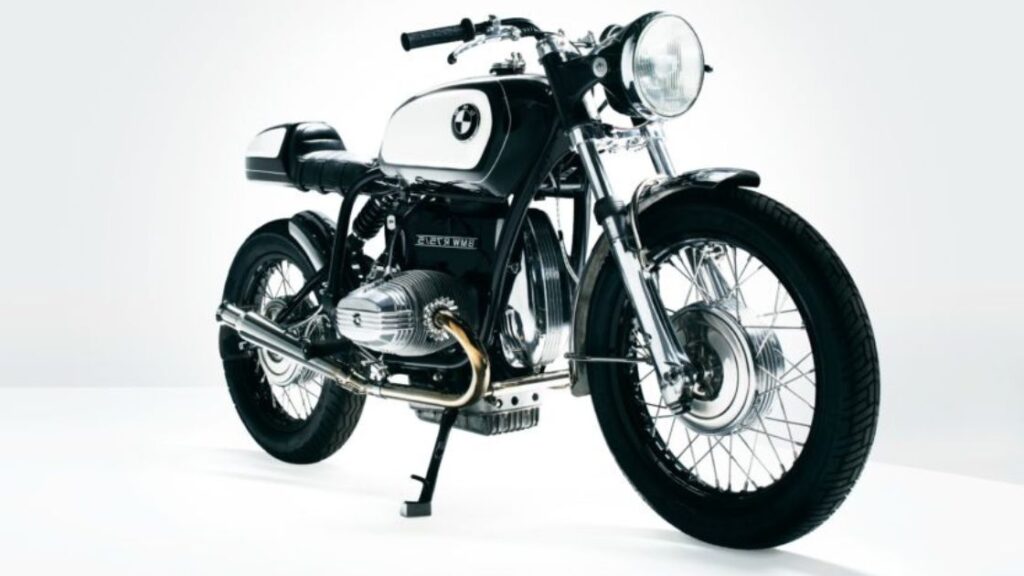
Bryan Fuller, a well-known custom builder, created a unique BMW R75 cafe racer. His design uses bold colors and handcrafted parts. The engine is tuned for extra power, and the bike features a custom exhaust. This build shows how personal touches can make a bike truly unique.
Builders in the Community
Many individual builders and small workshops have created stunning BMW R75 cafe racers. These bikes often appear at motorcycle shows or in online forums. Each build reflects the builder’s vision and skills.
These builds prove the BMW R75’s potential for customization. They inspire others to take on their own projects and create something unique.
The Cost of Building and Maintaining a BMW R75 Cafe Racer
Building a BMW R75 cafe racer takes time and money. Knowing the costs helps you plan your project better. The total price depends on the bike’s condition and the parts you want to use.
Buying the Base Bike
The first cost is the BMW R75 itself. A complete bike in poor condition can cost between $3,000 and $5,000. Well-maintained models or partially restored ones may cost up to $10,000. Rare models like the R75/5 or R75/6 might cost more.
Parts and Tools
Custom parts make up a big part of the cost. A new seat can cost around $200 to $400. Custom fuel tanks can cost $500 or more. LED lights, clip-on handlebars, and modern brakes add another $500 to $1,000. Tools like wrenches and a lift stand are also needed. These can cost a few hundred dollars if you don’t already own them.
Engine and Mechanical Work
Rebuilding the engine is common for older bikes. New gaskets, seals, and carburetors can cost $1,000 to $2,000. A complete engine rebuild might go up to $5,000, depending on the work needed. Upgraded exhaust systems cost $300 to $700.
Paint and Finishing
Painting the bike can cost $500 to $1,500. The price depends on the paint quality and design. A simple color costs less than custom graphics or metallic finishes.
Maintenance Costs
After the build, maintaining the bike is important. Regular oil changes, new filters, and tune-ups cost around $200 per year. Major repairs, like replacing worn parts, might cost $500 to $1,000 every few years.
Labor Costs
If you hire a professional to build or restore your bike, labor costs will add to the total. Custom shops charge $50 to $100 per hour. A full build can take 100 hours or more. This can add $5,000 to $10,000 to the total cost.
Budget Tips
- Start with a clear plan and budget.
- Use second-hand parts to save money.
- Do small tasks yourself, like cleaning or basic assembly.
- Focus on upgrades that matter most, like the engine or brakes.
Building a BMW R75 cafe racer can cost anywhere from $5,000 to $20,000 or more. The exact amount depends on your choices and how much work the bike needs. A well-planned project saves money and gives you a bike you’ll love.
What’s the Riding Experience Like?

Riding a BMW R75 cafe racer is a unique experience. It combines the charm of a vintage bike with modern upgrades. This mix makes it exciting and enjoyable for riders.
Smooth Performance
The boxer engine provides smooth and balanced power. The design reduces vibrations, making long rides more comfortable. Upgraded carburetors and exhaust systems improve throttle response and speed. This makes the bike perform better than many other vintage models.
Handling and Control
The BMW R75 has a sturdy frame that handles well. Clip-on handlebars and modern brakes improve control. Lowered suspension gives the bike a sporty feel. Riders say it feels stable on straight roads and responsive in turns.
Riding Position
Cafe racers have a forward-leaning riding position. This makes the bike aerodynamic and adds to the classic look. Some riders find it less comfortable for long rides. Builders often add padded seats or adjustable handlebars to improve comfort.
Noise and Feel
The custom exhaust gives the bike a deep, loud sound. Many riders enjoy this as part of the cafe racer experience. The bike feels powerful but not overwhelming. Its weight and design make it easy to handle for both beginners and experienced riders.
City and Highway Rides
The BMW R75 cafe racer works well in both city traffic and open highways. It’s light and nimble for navigating urban streets. On highways, the upgraded engine keeps up with modern vehicles. This balance makes it versatile for daily rides or weekend trips.
Rider Feedback
Owners often talk about the emotional connection to the bike. It’s not just a vehicle; it’s a piece of history. Many riders enjoy the attention and conversations the bike attracts. It’s a motorcycle that stands out wherever it goes.
The BMW R75 cafe racer offers more than just transportation. It’s a bike that feels alive. Each ride is a reminder of the hard work and creativity behind its build.
Tips for First-Time Builders
Building a BMW R75 cafe racer for the first time can feel overwhelming. Breaking the process into small steps makes it easier. These tips help beginners avoid common mistakes and create a bike they can enjoy.
Start with a Clear Plan
Decide what you want your bike to look like before starting. Sketch ideas or find photos of other BMW R75 cafe racers. List the parts you need and estimate the costs. A plan keeps you focused and prevents wasting time or money.
Choose the Right Bike
Pick a base bike in good condition. Avoid one with major rust or missing parts. A complete bike is easier and cheaper to work on. Check the engine and frame for signs of damage. Starting with a solid base saves a lot of trouble.
Learn Basic Mechanics
Understand how the BMW R75 works. Read manuals or watch tutorials online. Learn how to remove, repair, and reinstall parts. Basic knowledge helps you solve small problems and save on repair costs.
Use Quality Parts
High-quality parts last longer and work better. Avoid cheap or mismatched components. They can cause problems later. If you can’t afford all premium parts, focus on the most important ones like the engine, brakes, and suspension.
Take Your Time
Building a cafe racer is not a race. Rushing can lead to mistakes. Work on one section of the bike at a time. Check everything carefully before moving on to the next step. A patient approach creates better results.
Ask for Help
If you get stuck, ask for advice from other builders. Forums, local motorcycle clubs, and social media groups are full of experienced enthusiasts. They can share tips and even help you find rare parts.
Test Your Work
After finishing, test the bike in a safe area. Check the brakes, lights, and engine. Make adjustments if something feels wrong. A well-tested bike is safer and more fun to ride.
Starting a BMW R75 cafe racer project is exciting. Each step teaches you something new. The final result is not just a bike—it’s your own creation.
The Future of BMW R75 Cafe Racers
The BMW R75 cafe racer continues to inspire motorcycle builders. Its popularity grows as more people discover the bike’s history and potential. Trends show that the future of this classic bike is exciting.
Increased Interest in Vintage Motorcycles
Vintage motorcycles like the BMW R75 are in high demand. Riders want bikes with history and character. The R75 offers both. Builders are drawn to its strong engine and timeless design. This interest keeps the bike relevant for new projects.
Electric Conversions
Some builders experiment with electric motors for vintage bikes. This trend could bring new life to the BMW R75. Electric conversions offer cleaner performance while keeping the bike’s classic style. As technology improves, this option may become more common.
More Custom Innovations
The cafe racer community is full of creative ideas. Builders continue to find new ways to customize the BMW R75. They mix traditional designs with modern features. Lightweight materials, better engines, and smarter electronics could make future builds even better.
Growing Online Communities
Online forums and social media groups help people share ideas and builds. More people now learn how to build cafe racers from these communities. As the BMW R75 gains more attention, these platforms will grow. This will make parts and advice easier to find.
Preservation of Classics
Some enthusiasts focus on restoring the BMW R75 to its original form. These projects celebrate the bike’s history while keeping it functional. This trend ensures the legacy of the BMW R75 stays alive.
The BMW R75 cafe racer will remain a favorite for years to come. Its mix of history, style, and performance ensures its place in the motorcycle world. Builders and riders will continue to innovate and share their passion for this iconic bike.
Conclusion
The BMW R75 cafe racer is a bike with a unique story. It started as a tough military machine and became a canvas for creativity. Builders respect its strong frame, reliable engine, and classic design. These features make it a favorite for customization.
Turning a BMW R75 into a cafe racer is a rewarding project. Each step, from finding the bike to finishing the build, offers a chance to learn and create. Riders enjoy the blend of vintage charm and modern performance. The result is more than a motorcycle. It is a personal expression of style and skill.
The future of the BMW R75 cafe racer looks bright. New ideas, technologies, and communities keep it alive and evolving. Whether you restore it, customize it, or simply admire it, this bike remains a symbol of craftsmanship and passion.
The BMW R75 cafe racer is not just a piece of history. It is a timeless icon that inspires people all over the world.
FAQs
What is a BMW R75 cafe racer?
A BMW R75 cafe racer is a custom motorcycle based on the BMW R75 model. Builders modify it to have a sleek, minimalist look and improved performance. This style began in the 1960s with riders who wanted faster, more agile bikes.
Why choose a BMW R75 for a cafe racer project?
The BMW R75 has a strong frame and reliable engine. Its classic design makes it a good base for customization. Many builders like its unique boxer engine and the bike’s history.
How much does it cost to build a BMW R75 cafe racer?
Costs vary based on the bike’s condition and the parts used. Buying a base bike can cost between $3,000 and $10,000. Additional parts and labor can add $5,000 to $15,000. Planning a budget helps manage expenses.
Where can I find parts for a BMW R75 cafe racer?
Parts are available online through marketplaces like eBay and Craigslist. Vintage motorcycle forums and local swap meets are also good sources. Specialized dealers may have rare parts. Networking with other enthusiasts can provide leads.
Is it difficult to build a BMW R75 cafe racer?
Building a cafe racer requires mechanical skills and time. Beginners may face challenges but can learn through research and practice. Starting with a clear plan and seeking advice from experienced builders can make the process smoother.
Can I ride a BMW R75 cafe racer daily?
Yes, many riders use their BMW R75 cafe racers for daily commuting. Ensuring the bike is well-maintained and comfortable for longer rides is important. Modern upgrades can improve reliability and comfort.
What are common modifications for a BMW R75 cafe racer?
Common changes include installing a custom seat, clip-on handlebars, and upgrading the exhaust system. Some builders also modify the suspension and brakes for better performance. Each build reflects the owner’s personal style.
Are there legal considerations when building a cafe racer?
Yes, modifications must comply with local laws. This includes regulations on noise levels, lighting, and emissions. Checking local requirements before starting ensures the bike remains street-legal.
How does a BMW R75 cafe racer compare to other models?
The BMW R75 offers a unique boxer engine and strong frame. Compared to models like the Honda CB750, it has a different feel and history. Each bike has its own strengths, and the choice depends on personal preference.
What is the future of BMW R75 cafe racers?
Interest in vintage motorcycles continues to grow. Builders are exploring new customization ideas, including electric conversions. The BMW R75 remains a popular choice for enthusiasts who appreciate its classic design and potential for personalization.


